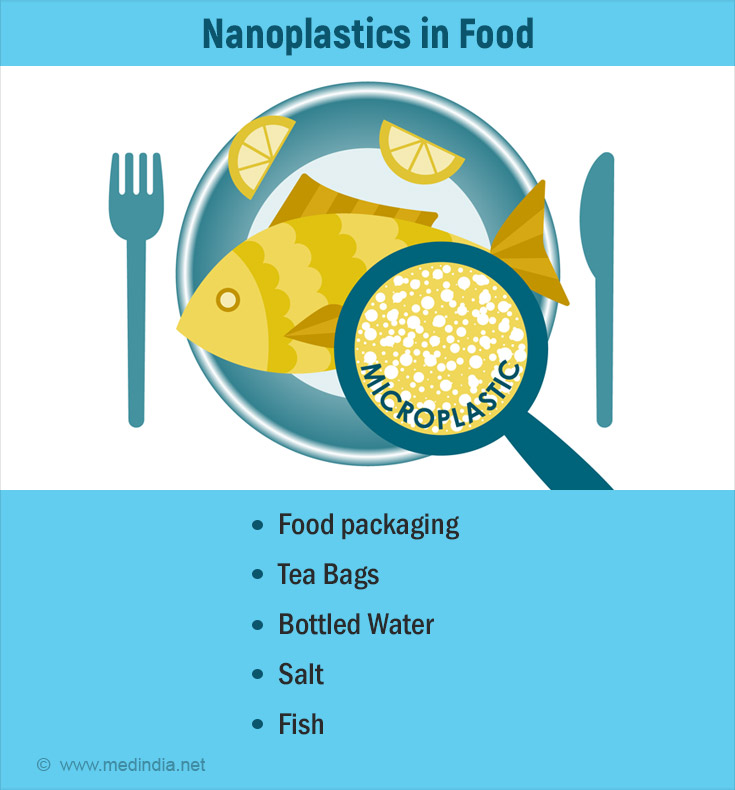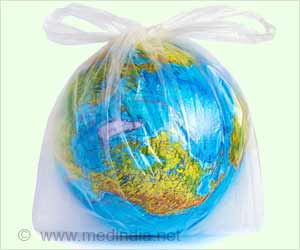- Nanoplastics and 'forever chemicals' disrupt molecular structures, functionality - (https://www.eurekalert.org/news-releases/1051096)
Introduction
Nanoplastics, tiny plastic particles, and Per- and polyfluoroalkyl substances (PFAS), often dubbed "forever chemicals" due to their persistence, have been linked to a range of issues, from disrupting hormone function to bio-accumulation in the food chain. Understanding their sources, behaviors, and potential risks is crucial for developing effective strategies to mitigate their impact(1✔ ✔Trusted Source
Nanoplastics and 'forever chemicals' disrupt molecular structures, functionality
Go to source).
Did You Know?
Nanoplastics and PFAS can disrupt protein structures, leading to health issues. #nanoplastics #medindiaOrigin of Nanoplastics
Nanoplastics primarily originate from the breakdown of larger plastic items. This degradation can occur through various processes, including:
- Photodegradation: Breakdown by sunlight
- Mechanical degradation: Breaking down due to physical forces (e.g., waves, abrasion)
- Thermal degradation: Breaking down due to heat
- Chemical degradation: Breakdown due to chemical reactions
Sources of Nanoplastics and PFAS
The invisible threats of nanoplastics and PFAS have emerged as significant environmental and health concerns. These ubiquitous contaminants are increasingly found in our air, water, and food, raising alarms about their potential impact on human health and ecosystems.
Common sources of nanoplastics include:
- Plastic products: Bottles, bags, packaging, and microbeads
- Textile fibers: Synthetic clothing releases microplastics during washing
- Tire wear: Microplastics are released from tire abrasion
- Industrial processes: Plastic manufacturing and processing
- Food Contaminants: Seafood and Sea salt contain microplastics due to contamination in the ocean

PFAS (per- and polyfluoroalkyl substances) are a group of man-made chemicals used in a wide range of products due to their water and oil-repellent properties. Some common sources of PFAS include:
- Consumer products: Non-stick cookware, food packaging, water-resistant clothing, and stain-resistant carpets
- Industrial applications: Firefighting foams, textile coatings, and manufacturing processes
- Wastewater treatment: PFAS can accumulate in wastewater sludge
- Landfill leachate: PFAS can leach from landfills into groundwater
Tiny Contaminants, Big Problems
Researchers at The University of Texas at El Paso (UTEP) have uncovered alarming evidence of the detrimental effects of nanoplastics and PFAS on human health. These ubiquitous contaminants, often referred to as "forever chemicals," are disrupting critical biomolecular structures and functions, with potentially severe consequences for human development.
The UTEP team focused on the impact of these compounds on three essential proteins: beta-lactoglobulin, alpha-lactalbumin, and myoglobin. Their findings, published in the Journal of the American Chemical Society and ACS Applied Materials and Interfaces, offer a stark picture of the damage caused at a molecular level.
A particularly striking discovery was the universal ability of nanoplastics and PFAS to dissolve the alpha helix region of proteins, transforming them into harmful beta sheets. This structural alteration is reminiscent of the changes seen in amyloid proteins linked to neurodegenerative diseases. These findings underscore the urgent need to address the widespread contamination of our environment with nanoplastics and PFAS. The UTEP team plans to continue their investigations, exploring the effects of other plastic and PFAS compounds.
Nanoparticles and its Impact on Essential Nutrients
- Beta-lactoglobulin: Found in infant formula, this protein binds to essential nutrients like vitamin A and fatty acids. The researchers found that nanoplastics and PFAS reduce their binding efficiency, potentially leading to severe developmental issues in infants. Additionally, they discovered that PFAS can bind to this protein, creating a carrier for these harmful compounds.
- Alpha-lactalbumin: Present in human breast milk, this protein is crucial for lactose synthesis. The UTEP team demonstrated that nanoplastics and PFAS disrupt its structure, potentially compromising lactose formation and leading to developmental defects like weakened immunity and impaired mineral absorption.
- Myoglobin: Responsible for oxygen storage in the body, myoglobin's function is compromised by nanoplastics and PFAS. This disruption can result in health issues such as breathlessness and anemia.
Regulatory Efforts Over Nanoplastics
The growing concern over nanoplastics and PFAS has led to increased regulatory efforts worldwide.
- Many countries have banned or restricted the use of microplastics in personal care products.
- Several countries and states have implemented regulations limiting the use of certain PFAS in consumer products.
- Governments and organizations are investing in research to understand the impacts of nanoplastics and PFAS and develop monitoring methods.
- Efforts are underway to clean up contaminated water and soil.
Conclusion
From altering protein structures to bioaccumulating in the food chain, the impacts of nanoplastics and PFAS are complex and multifaceted. While research is ongoing to fully understand their long-term effects, the available evidence underscores the urgent need for proactive measures.
The road ahead is undoubtedly challenging, but with concerted efforts and a commitment to sustainability, we can mitigate the risks posed by nanoplastics and PFAS and build a healthier, more resilient world.








